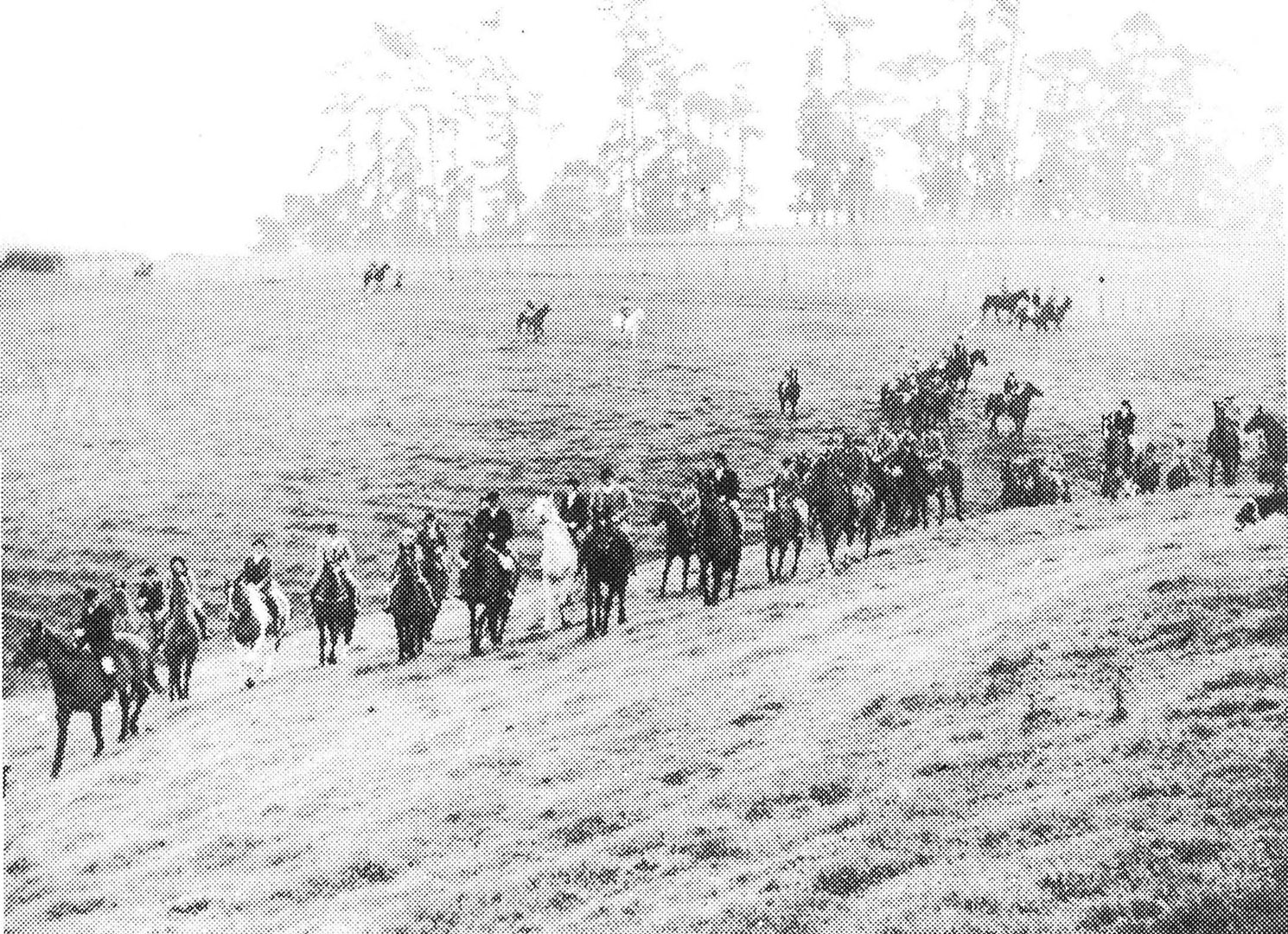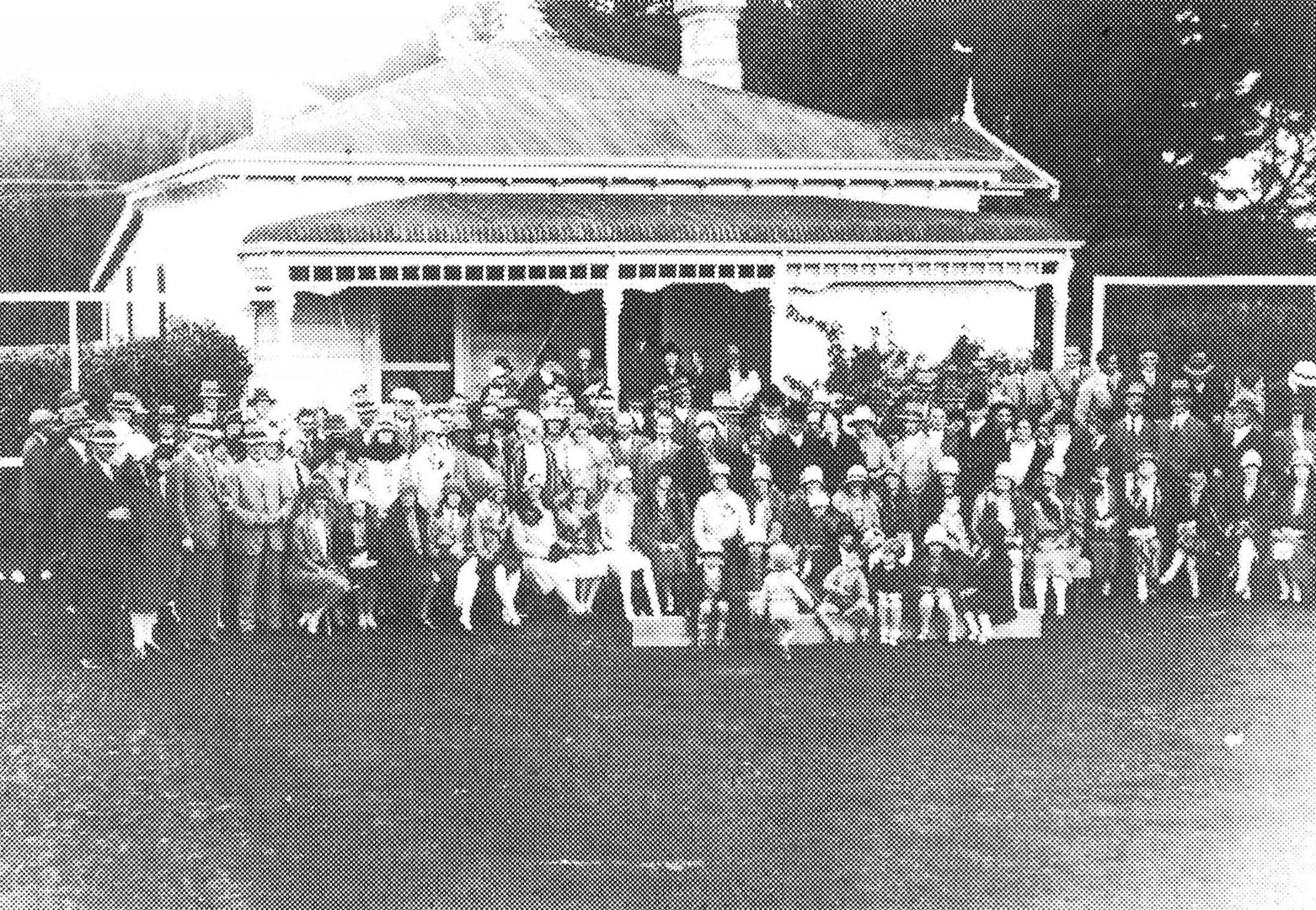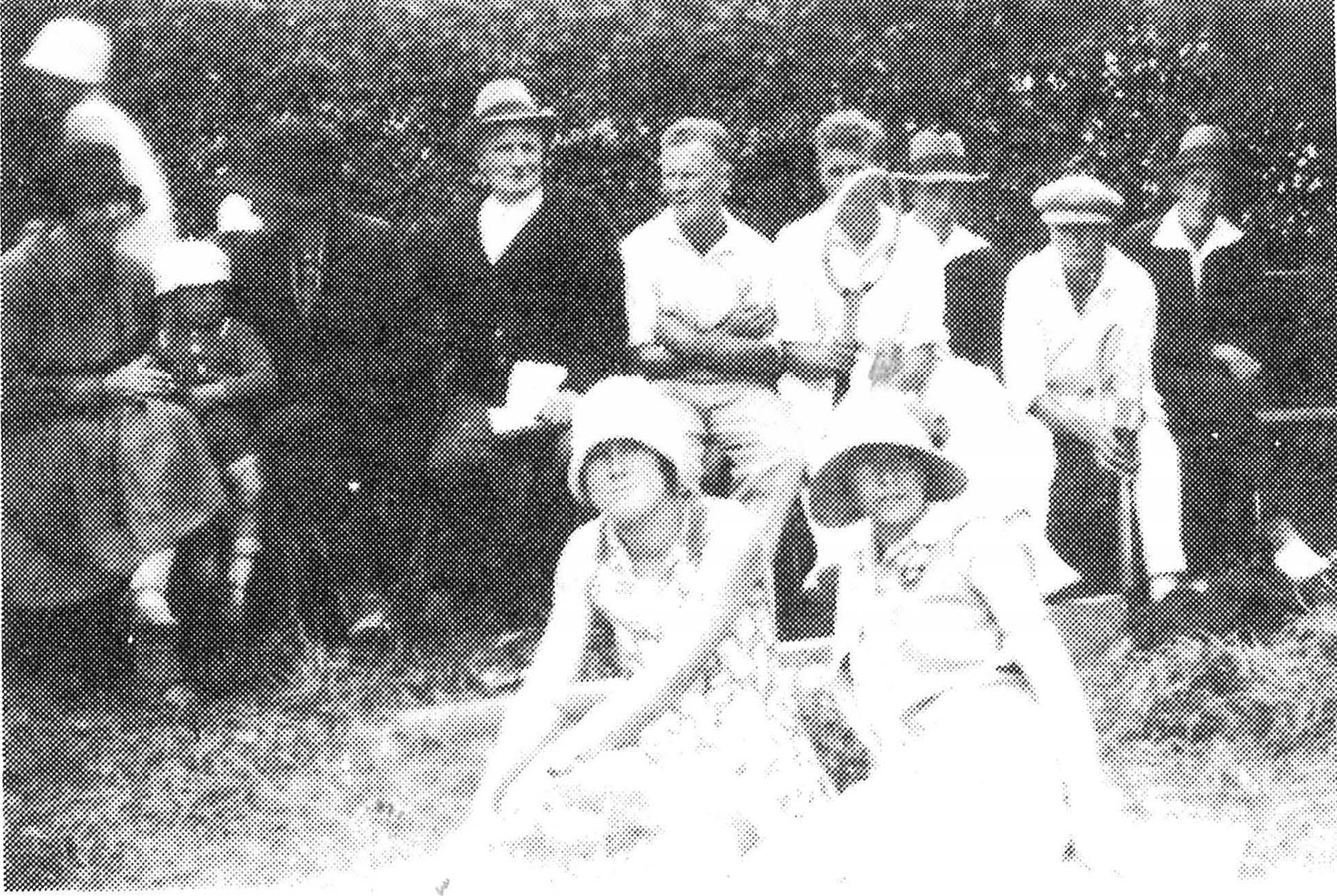WHILST hewing a livelihood from the scrub and flax the settlers tolerated many hardships. Amenities were few and money was scarce. The constraints of their lifestyle no doubt caused so many social activities to flourish in the little farming district.
Those were days when people made their own fun, whether a barn dance or a picnic or a game ofcricket. Everybody joined in, anyone who could swing a bat or hit a ball. Eureka soon developed quite a reputation for its rugby team, tennis club and in later years its badminton and indoor bowling clubs.
By 1914 the community decided they needed a hall. The hall committee's first meeting was held on March 11 in the school. Mr Joe Muir, a local resident, proposed that a hall should be built. The motion was immediately seconded and carried unanimously. A subscription list opened that night reached 101 pounds 9 shillings. One of Eureka's pioneers, Mrs Murphy, donated the site for the hall-a half acre on the south side of the main highway.
Arrangements went ahead; the Bank of New Zealand allowed an overdraft of 400 pounds on a Joint and Several at six percent; by June 3rd trustees had been appointed to make arrangements with an architect for the survey, plans and specifications. The architect was Mr Jack Chitty of Hamilton. Tenders were soon called for the construction and Mr D. Andrews' price of 459 pounds was accepted.
Contributions to the fund flowed in from the community and their friends outside Eureka. The subscription list closed with a total of 152 pounds 14 shillings. Added to the first night's donations it totalled 254 pounds. As the work progressed it was obvious the original tender had been exceeded. The cost was now 529 pounds 11 shillings and sixpence.
The hall was finally completed in August that year but the turmoil caused by the beginning of World War I delayed the opening. On December 18, 1914 Mr R.F. Bollard opened the hall.
Although Eureka's settlers were already close-knit the opening of the hall had a tremendous impact on the district. From its opening the hall was a silent witness to many events in the community-both great and small. There were farewells for the Eureka lads off to war very soon after it was built, card evenings, kitchen evenings for girls about to marry, concerts, meetings to discuss serious issues, dances for sheer enjoyment. .
On Sundays it became a church. Formerly church services were held at the school. One of Mrs Jackways' children said her mother trudged off to the school one rainy Sunday. She was the only poor soul who attended, apart from the priest.
When services were held at the hall the various denominations took their turns. Sunday school was also held there.
Dances could now be held at the hall instead of in barns. The first dance held when the hall opened was so good it was decided to hold another on the first new moon.
Mr Clary Cresswell, who still performs occasionally, played at many of the dances at Eureka and surrounding districts. He said the Cresswell family virtually ran the dances there.
People came from miles around on horseback or by horse and gig. In later years free buses ran from Hamilton to Eureka for the dances. Policing of alcohol was strict but the men still managed to smuggle some in. One Eureka resident remembers pedalling into Hamilton to buy a sugar bag of Waikato brew and then biking all the way back to Eureka for the dance. Mr Cresswell's father, Cuthbert Cresswell, manned the door, his wife and their grandmother prepared the food for the supper and Clary was in charge of the music. His band consisted of three to six people-a family affair that gave much enjoyment to the settlers.
During the war years the ladies of the district formed a social club.
Aimed at raising funds for the soldiers, it also injected some fun into life while their men were away.
Snippets from the minutes of their club meetings reveal life in those times: "On March 6, 1940 the club held their first meeting of the year. They decided to hold card evenings fortnightly at the hall and the funds would be used for patriotic purposes. Proceeds from the card evening of March 13: two pounds. This was donated to the patriotic appeal. At their May meeting they decided the proceeds raised from their social meetings would go towards the hall fund and the patriotic appeal alternately.''
Over the years they contributed to various appeals, the Plunket Society and sometimes towards toys for children who were patients at Tokanui Hospital.
On May 6, 1942 a discussion arose as to whether they should have afternoon teas with sugar rationing in force. It was decided they would continue but the hostess would not have to provide sugar! They also began sending food parcels to Britain every month and aspecial parcel at Christmas time.
As the war came to an end the meetings grew more frivolous. Small competitions were held for the "best bloom" and the most original article made from a scrap such as a sugar or flour bag. Bathroom and pantry afternoons for girls about to wed flourished again.
After the war donations again went to the hall fund for items like lining, chairs and crockery. They started to hold children's Christmas parties every year in the hall.
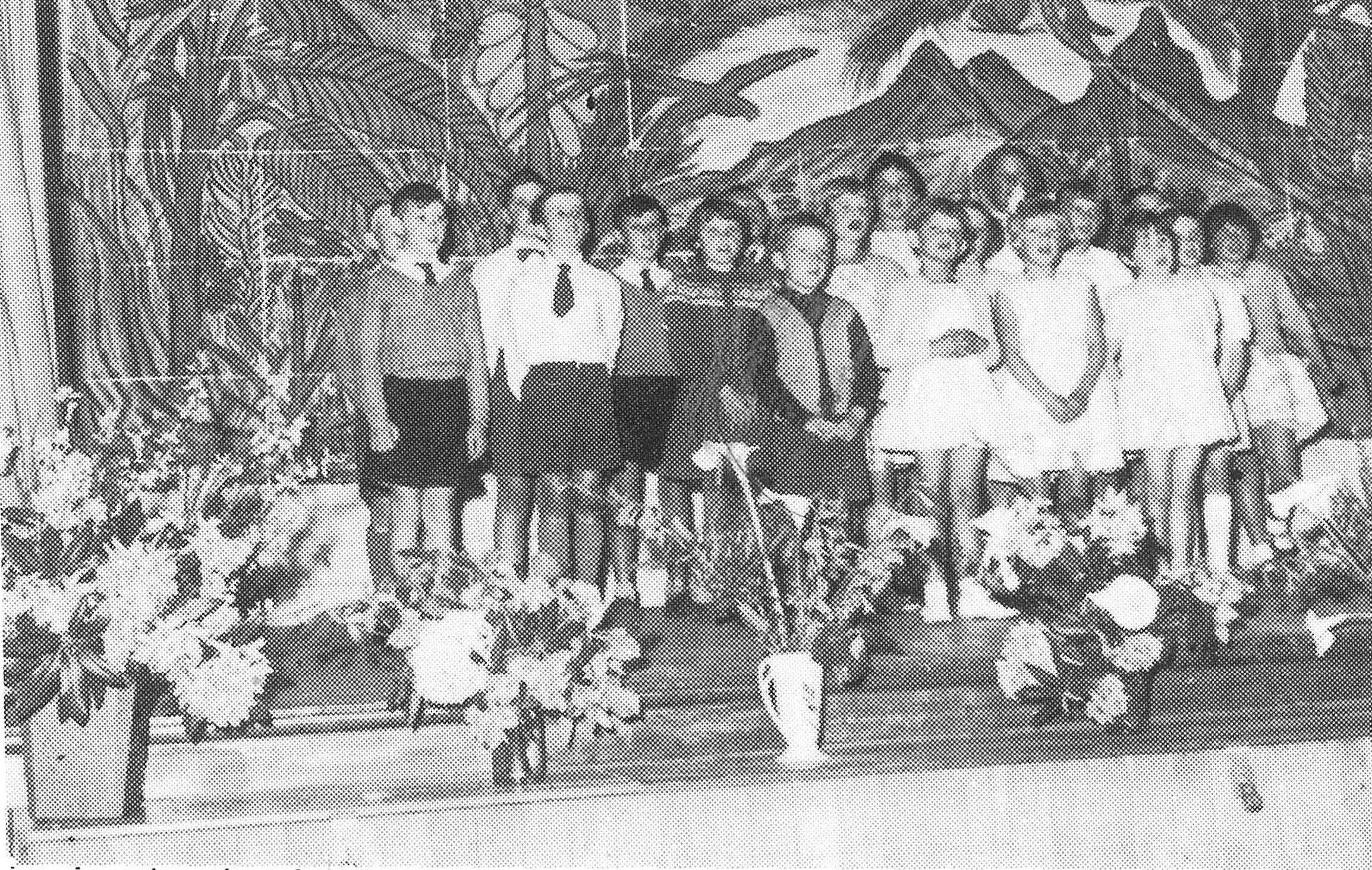

The ladies organised several dances to raise funds for a men's toilet in the hall. It appears the lack of this facility caused the ladies some concern and several months were spent raising money for it.
By 1961 Eureka's residents decided it was time to erect a more modern hall. They met that August to discuss ways of raising the money needed. By July 1966 they had decided the best way to raise the required 8000 pounds was by way of a special rating scheme for the district. After some discussion with the Waikato County Council this method was chosen.
Tenders were called and that of Mr Tom Muir, a former Eureka resident, for $18,355 was accepted. The hall committee also received from the Golden Kiwi Lottery Board a grant of $1300 conditional on the hall being completed within 12 months.
On August 31, 1968 a special family evening was held at the old hall. Both young and old came to farewell the old building that had served them for nearly 54 years. On September 8, 1968 Mr Ivan Pizzini started the demolition work. By October one of the district's landmarks was gone forever.
The hall committee purchased an adjoining section to the old site and the new hall was sited across both sections. In November the foundation of the new hall was laid. The steelwork, blockwork and roof were completed by December. A few more improvements were made and on January 30, 1969 the committee held their first meeting in the new hall.
The new hall was literally put together by the community. A working bee of 50 residents puttied 29,700 nail holes in the floor. Eureka Transport carted many metres of clay and sand to level the section. The Eureka Ladies Guild donated chairs, tables, heaters, a door and curtains. The Ladies Social Club donated a stove, crockery and tiles for the floor.
On April 19, 1969 Mr Campbell Henderson, chairman of the Waikato County Council, opened the hall and 200 residents attended the afternoon opening. A tea was served and later than evening 216 people celebrated the opening at a ball which went on to the late hours.
Since then the hall has been used continually for dances, balls, badminton, bowls and yoga. Before 1910 the only place large enough to hold the whole community was the butter factory. The hall now provides an excellent venue for a meeting.
In the 1950s a Presbyterian Ladies Guild was formed. The founders of this group were Mrs Alex McCiennan and Miss Grace Inglis. The objective of the group was to raise money to help with the running of the church services held in the hall. The money was raised mainly from the annual flower show held in the hall. In the late 1970s the Guild went into recess as the church services had been moved to Hillcrest. As it was wished to keep the money in the district the funds in hand were donated to the Eureka Hall Committee for furnishings. A plaque in the hall today acknowledges this generous donation.
Through two wars and two periods of peace most of the district's life revolved around the hall. The first hall has now been replaced by a modern building. It stands as a monument to the community spirit and enterprise of the pioneers.
* * * *
The district has always been prominent in sport, especially in the show ring, the hunting field and in rugby.
RUGBY
Over the years Eureka produced many a good rugby player. They began playing in their school days and later went on to gain representative honours.

Back row: H. H. Howden, A . Thrupp, L. Landman, P. De Ville, W. Davidson, H. Howie, T. Hinton (President).
Second row: G. Radford, C. Radford, H. R. Hinton, C. Hinton (Capt.), R. A. Hinton, A. Devine, L. Radford.
Front row: T. Thrupp, J. Mulcahy, C. Clarkin
Eureka School's football team of 1909-10 was well-known throughout the district. Made up of eleven-and twelveyear olds, they had to catch the train into Hamilton to play against various Hamilton schools. They beat them all and won the Howden Cup that season.
One of Eureka's Pioneers, Mr Thomas Hinton was a well-known rugby footballer in the Waikato. He was also the father of the Piako Rugby Union and captained the Piako representatives for many years.
Following their father, the Hinton clan continued to be prominent on the rugby field. George, Ross, Arthur, Dick and Carl Hinton were all representatives for Hamilton. Other locals who gained representative honours in the Hamilton team were Tom, Will and Cyril Clarkin, Lester Masters and Bill Leask. Terry and Roy Clarkin played in the Morrinsville representative team.
Mr Pat Clarkin also represented King Country and later played for Waikato. Mr R. McWilliams made the Auckland team and later the All Blacks.
TENNIS
Tennis was also popular at Eureka. The tennis court at the Masters' homestead was frequently used. Tennis was also played on the school courts but interest in the game had been sporadic for some time until some children revived the club in the thirties.
Mr Tom Hinton, the pioneer's gfandson, said he and some other kids discovered a few old racquets at the school and started playing with them. The community became interested, racquets were donated to the school and a tennis club was started. Mr Arthur Hinton donated a cup to the school in 1939. Held on a handicap basis, competition for this cup became a keenly contested annual event eagerly looked forward to by pupils from Standard 3 to 6.
Long-time locals recall the many popular tennis afternoons held at Eureka. The club played Hillcrest, Newstead, Matangi, Tauwhare and Motumaoho and in its day was one of the strongest in the area.
NETBALL
In the mid 1930s, two sand tennis courts were put down in Lester Masters' paddock opposite the school. However, they were never used for tennis as the sand proved to be too heavy. Instead they were put to use as netball courts by some of the young married and single girls. The team members were Grace and Ivy Townsend, Greta Powdrill, June Hinton, Norma Johns, Beattie and Nellie Harris, Alma and Edna Manson and Hermine Masters. A team of local lads were recruited for practice sessions. Games were played against other country districts. A Town versus Country tournament was also held and the Eureka team won this. A Country rep team was picked to play the Town on the final day of the competition and included the three 'centres' from the Eureka team: June Hinton, Hermine Masters and Norma Johns. Yes, the Country team won!
INDOOR BOWLS
Indoor bowling became popular in the fifties. The Eureka Indoor Bowling Club was formed in 1951, although it had previously been one of the activities of the Young Farmers' Club. Membership increased steadily and the country club had quite a reputation. In 1963 Bruce McCiennan won the New Zealand Indoor Bowling Singles championship held at Wanganui. He had been bowling for nine years-a proud moment for the club. In its 14 years of operation it had also supplied runners-up in the pairs, runners-up in the fours and quarter-finalists in the rinks. Mr McCJennan, who was Eureka's president in 1963, also won the Waikato Singles in 1960.
In 1983 Mr Bob Townsend was elected a Life Member of the Eureka Bowling Club. Having been a foundation member, long serving office holder and club stalwart, it was a fitting tribute to a very popular member.
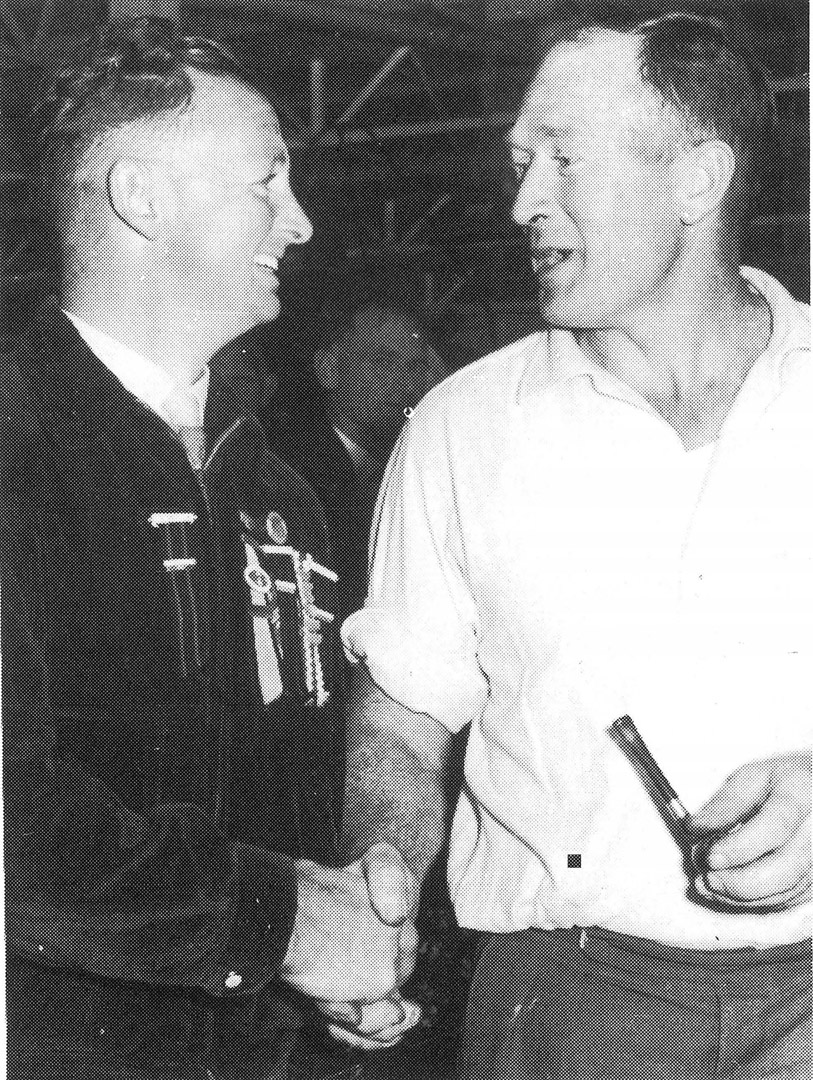
BADMINTON
In 1954 a Eureka Table Tennis Club was formed but after three years it was decided to hold a public meeting to consider the formation of a badminton club as interest in table tennis had waned. On the third of April, 1957 it was decided to form a club to be named Eureka Badminton Club. Jack Hunt was the first president and Tom Hinton the first club captain. The Table Tennis Club handed all its assets over to the new Badminton Club. The secretary, Glennis Inglis, was authorised to purchase paint for lines, one new net, one dozen shuttles and four racquets for club play. At a general meeting later in the season the Badminton Club paid the Eureka Hall Committee $38 towards the cost of new fluorescent lights. The club has thrived at both senior and junior level, thanks in no small way to the involvement of Tauwhare members. In 1979 an ex-junior member of the club and Waikato champion, Marlene Landon, won the National under 16 Title. Also in 1979 a 25th anniversary ball was held. At this function Barry Mayall was
honoured with life membership. Currently the club is flourishing with the teams continuing to do well in the inter-club competition. In 1969 a ladies' aftenoon badminton club was formed and this has proved to be popular and successful at both club abd inter-club level.
A tennis afternoon at Eureka in 1927.
HUNTING
When hunting first began at Eureka almost every man, woman and child owned a horse and most homes walked a hound puppy for the Hunt Club.9 Everyone participated; even if they did not have a horse, they followed on foot. Early in the day they met at one of the farmers' homesteads, mounted their horses and went chasing the hare down the old Factory Road and across farm paddocks. The farms then had large paddocks and drains. There were also hurdles on most of the farms, so the horses could jump from one paddock to the next.
In later years the hunts became more structured. The participants were dressed in correct hunting attire. By then the Waikato Hunt headquarters were at Fencourt near Cambridge. The hounds were kept there and walked to wherever the hunt was being held. The horses, too, had to be ridden to the hunts and back home again-no horse trailers then. There were usually four to five hunts at Eureka over the winter. These were well attended by some 50-100 people. The Pakuranga Hunt Club was visited occasionally and once the Governor-General, Lord Jellicoe, and his wife attended a hunt.
Towards the end of the day, hunting was purely incidental. Usually, a "hunt breakfast" followed the hunt-sandwiches, tea and some liquor. Out poured the stories of the day's challenges and disasters.
There were many fine horses at these meets but one many people recall was Golden Roll, owned by Mr Mel Masters. Mr Lester Masters said his father bought the horse at a fair in Cambridge.
"He had more spills off that horse in the first year than he ever had off anything in his life. The horse never jumped a hurdle-he rolled over them!"
Hence he was christened Golden Roll, said Mr Masters. The horse later became a well-known showjumper in the Waikato and was.re"named 'St. Nick'. After he finished his showjumping days he pulled a gig and jogged along obediently whenever his owner drove, but played up with anyone else.
"He was a fair dinkum outlaw. He bit and kicked and ended up delivering milk to the factory," said Mr Masters.
Other well-known local names in the hunting field were Dulcie Peters (nee Harris) on 'Mickey', Noel Campbell on 'Eiffel Tower' and Norman and Noel McClennan. Mr Norman McClennan even now at 80-plus still trains racehorses.
The Hunt Ball at Eureka was always the year's highlight according to Mr Harry Clarkin, a frequent participant in the hunts. People came from all the surrounding districts and a huge marquee was erected by the old hall where the supper was served.
Hunting at Eureka ended wheh farming became more intensive and paddocks decreased in size. Though the Waikato Hunt is still strong, it is now confined to sheep and cattle areas in the hills where the paddocks are large. The last Eureka Hunt Meet was held in 1954 but hunts were still held over the Johns' farm for a few more years.
During the Second World War gymkhanas were held at Eureka, Gordonton, Cambridge, Matangi and Taupiri. Aimed at raising funds to send food parcels to Britain, they attracted sizeable crowds. They ended with the war when the
usual venues for shows started operating again.
Eureka's gymkhanas were held in Stokes' paddock. There were all sorts of competitions-tilting the ring, draught horse derbies and pony scurries.
After the war a training track was made in Schollum Road. For a while the gymkhanas continued there but interest later
centred on the major Waikato shows.
Many Eureka folk made names for themselves at shows in the Province. From 1907 to 1913 Mr Thomas Hinton won Champion Hack and Hunter at every show in the Auckland province with a horse called 'Larrikin'. Olive Hinton (Mrs W. Luxton) was champion lady rider throughout the province -both side saddle and astride. Carl Hinton was Gentleman Rider at many shows. Ruby Hinton (Mrs S. lnsoll) was a Champion Lady Rider. Cyril Clarkin was a Gentleman Rider and rode many winners for other people. R. H. (Bob) Townsend won many championships with 'Perfection'. He also had a champion carriage mare in 'Nancy'. Tom and Pat Clarkin and Jas McClennan also had many successes in the show ring as did Mel Masters. In later years Jill Campbell was successful at many shows and gymkhanas with 'Penny' and later still Caroline Tims (nee Hinton), with her pony 'Ebony', carried on the family tradition in the show ring as has her family in more recent years. Her son Peter is a most successful jockey, having been New Zealand's leading apprentice rider.
"Racing in New Zealand has become everyman's sport from the rich to the poor. In the early days racing relied to a great extent on the sport of hunting for its steeplechasers and hurdlers. People who hunted had racehorses, too. Hunting in the Waikato meant a great deal to racing and other sports in New Zealand," said Mr Harry Clarkin.
And he should know. Mr Clarkin, one of Eureka's best known identities, was for 33 years a racing judge in the Auckland district. He started with showjumping and won a string of cups and trophies. His connection with the shows led him eventually to race commentating and then into the judge's box.
In 1947 he accepted a position as assistant judge. Ten years later he was offered the position of judge of the Auckland Racing Club. Other clubs were quick to follow suit and he quickly became one of the most popular racing personalities in the top half of the North Island.
He ended his distinguished career on July 23, 1980.
